The attacks adhered to Russia’s recent pattern of launching widespread strikes about every two weeks.
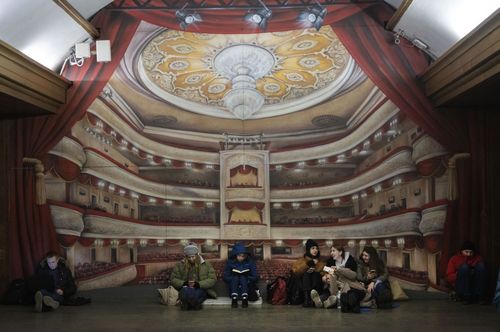
Kyiv Mayor Vitali Klitschko said a strike killed one person, the city’s first such death since New Year’s Eve.
Two others were injured, he said. The head of the Kyiv city administration, Serhii Popko said Ukrainian air defenses shot down 15 cruise missiles heading to the area were shot down.
Russia has carried out massive strikes on Ukrainian power plants and other infrastructure since early October.
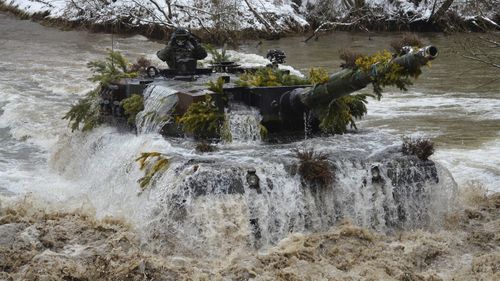
Valerii Zaluzhnyi, the commander of Ukraine’s armed forces said Thursday’s volley involved 55 missiles, of which 47 were intercepted.
Self-exploding drones swept in overnight before the missile strikes, in what a spokesperson for Ukraine’s Southern Defense Forces said appeared to be a Russian attempt to overwhelm or distract Ukraine’s air defenses.
It was the first such barrage of Russian firepower across the country since January 14.
Maksym Marchenko, the governor of southern Ukraine’s Odesa region, said energy infrastructure facilities were damaged in his and several other regions, causing “significant problems with electricity supply.”
The regional administration in the nearby Kherson region, where Ukrainian troops recaptured the regional capital in November, said Russian shelling killed two people and wounded five over the past day.
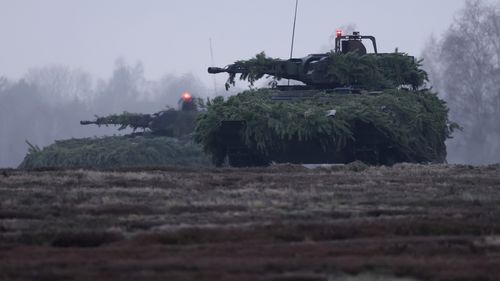
The attacks came a day after Germany said it would supply 14 high-tech Leopard 2 battle tanks to Ukraine and authorise other European countries to send up to 88 more.
Along with Germany and the US, Britain, Poland, the Netherlands and Sweden are among the nations that have sent or announced plans to supply hundreds of tanks and heavy armored vehicles to fortify Ukraine as it enters a new phase of the war and tries to break through entrenched Russian lines.
The conflict has largely been a stalemate in recent months, though Ukrainian forces acknowledged on Wednesday a controlled pullout from the salt-mining town of Soledar in Donetsk province, a battle-scarred area of eastern Ukraine that has been embroiled in war since Russia-backed separatists seized large swaths of the broader Donbas region in 2014.
Read Related Also: Emily Elizabeth Looks Incredibly Stunning In Her White Crochet Bikini
Gian Gentile, a US Army veteran and senior historian with the Rand think tank, said the M1 Abrams and the Leopards would give Ukraine a “mechanised armored punching force.”
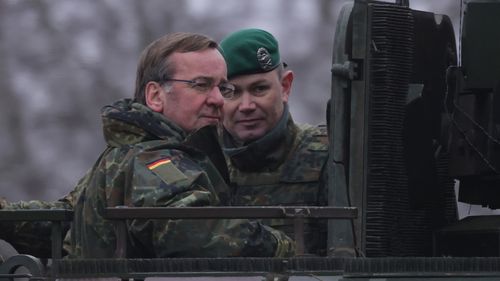
German Defense Minister Boris Pistorius said Ukrainian crews will start their training in Germany in coming days on German-made Marders, which are infantry fighting vehicles, while training on the heavier Leopard 2 tanks would start “a little later.”
“In any case, the aim with the Leopards is to have the first company in Ukraine by the end of March, beginning of April,” he added.
“I can’t say the precise day.”
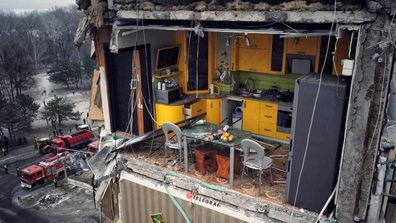
Heartbreak over family kitchen wrecked by Russian missile strike
In an interview with Britain’s Sky News on Wednesday, Ukrainian President Volodymyr Zelenskyy said he didn’t know when the tanks from the US and Europe would arrive.
NATO Secretary-General Jens Stoltenberg, also speaking to the British network, declined to speculate on the timing, but said “allies are extremely focused on the importance of speed.”
Kremlin spokesman Dmitry Peskov said the move to provide Ukraine with modern Western tanks reflected the West’s growing involvement in the conflict.
“Both European capitals and Washington keep saying that the delivery of various kinds of weapons systems, including tanks, to Ukraine, absolutely does not mean the involvement of these countries or the alliance in the hostilities ongoing in Ukraine,” Peskov told reporters.
“We categorically disagree with that.”
“Moscow views everything the alliance and the capitals I have mentioned as direct involvement in the conflict,” he added.







